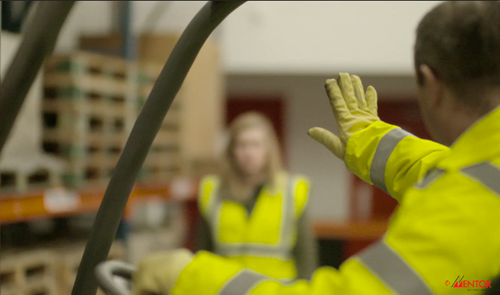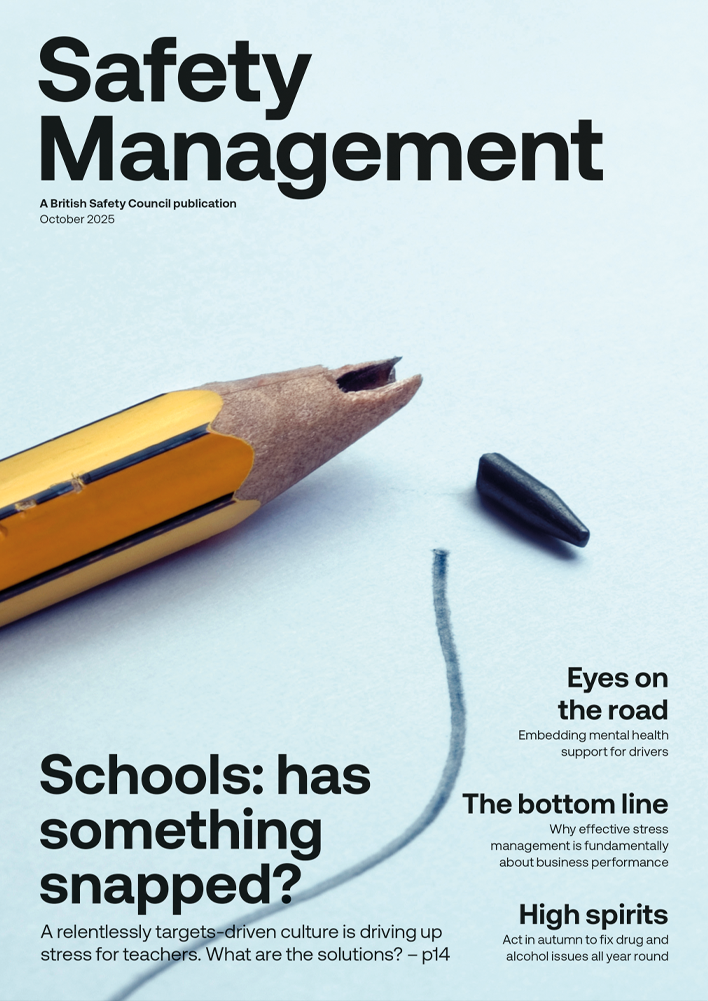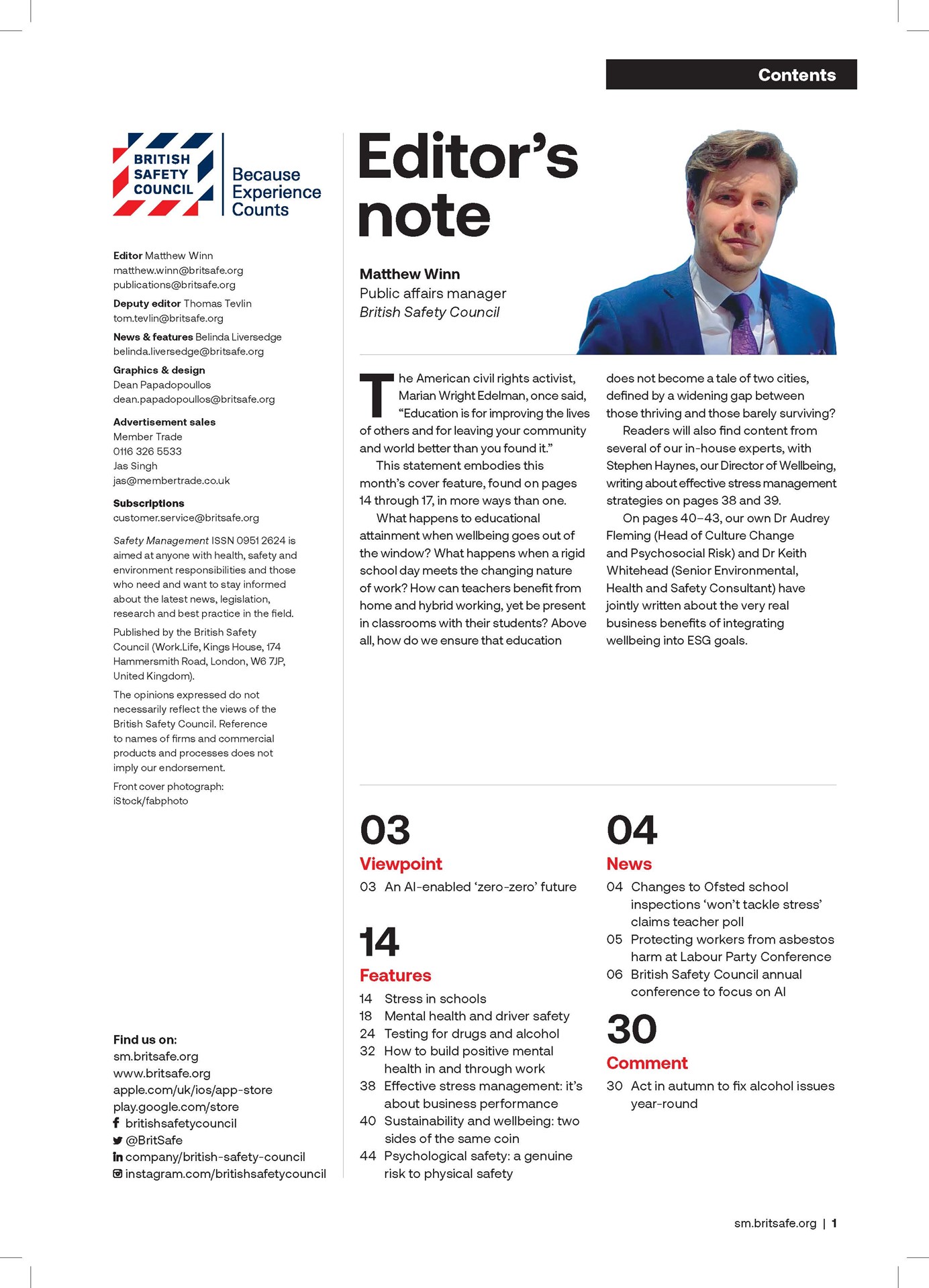At the start of a new year, we often ponder on what the coming year will bring about as well as reflecting on the previous year’s events.
Features
A time to reflect
As I approach a watershed birthday soon, I have started to reflect on the many changes I have witnessed throughout my working career and also to look at where the future direction of health, safety and wellbeing may be going.
There is no doubt that the UK, in particular, has progressed a long way in recognising the importance of sound health and safety management and adopting good standards from a moral and financial perspective. Historically, legislation has driven improvements, often unfortunately following a catastrophic event and there is no doubt that a robustly- implemented legislative framework has been essential in ensuring that health and safety is incorporated into good business practice.
This approach has helped ensure that physical injuries sustained from workplace activities have been dramatically reduced over the last 40 years, although it is still completely unacceptable in my view that the 144 workplace fatalities reported last year, are still occurring at all in this day and age.
However, recent years have seen a wider acceptance of the business benefits of adopting good health and safety practices, and the more enlightened businesses are actively integrating health and safety into all aspects of their business operations.
When I think back to my days as an apprentice electrician in the mid-70s – which should confirm the notable approaching birthday – the improvements in working conditions and expectations for workers have dramatically improved.
I vividly recall working on a construction site when a scaffolder was fatally injured following a fall from height while working in driving rain.
The horrendous incident was made worse by the fact that his son was working with him at the time and witnessed it. The site was closed for the day while investigations were carried out but, unbelievably, operations resumed the following day as the project was behind schedule. A real-life example straight from the pages of The Ragged-Trousered Philanthropists.
I would like to think that we have come a long way since those days both in terms of workplace conditions and attitudes toward health, safety and welfare.
The last few years have seen a welcome focus on the impact that workplace conditions and expectations can and do have on people’s health. In particular, the adverse effects that job demands, management expectations and pressures can cause on an individual’s mental health are now recognised in the more progressive organisations as causal factors in long-term absenteeism, staff turnover, loss of productivity, increased accidents and incidents of non-conformance.
Having experienced a mental health related issue on a personal level over a number of years, I can bear testimony to the effect a lack of managerial support and understanding has on an individual’s wellbeing.
The introduction of a globally- developed international standard for health and safety management (ISO 45001) last year was a welcome and positive step toward harmonising the approach to health and safety management issues. The standard places explicit requirements on the top management of an organisation and requires them to demonstrate leadership and commitment in several aspects of health and safety, not least of which is the requirement to develop and promote a positive culture.
There are numerous concepts and definitions of what is meant by safety culture and all have valid foundations, but personally I have always believed that it is merely an aspect of an organisation’s overall ethos and culture.
It is, of course, essential that legal compliance and a sound framework for managing risk are established and effectively maintained, but these factors are just the building blocks on which a positive culture is built. Senior top management demonstrable commitment towards promoting and leading an inclusive culture whereby all employees – and indeed other stakeholders – are valued and respected is essential in developing a positive organisational culture. In my experience it can become quite a glib commitment from top management levels and is much harder to genuinely implement and maintain.
With the advent of a global health and safety management standard, increased expectations on top management and an increased appreciation of the importance of mental health, I remain optimistic that the future employee can thrive in a safe, healthy and positive environment wherever he or she may work.
FEATURES

Targeting dust in construction
By Belinda Liversedge on 30 October 2025
Rohan Jindal was cycling to college in Dehli where he was studying engineering, when he had to stop. Not because of the hot sun beating down, but because he couldn’t breathe. And although asthmatic, that wasn’t the trigger. Looking all around he saw construction sites emitting large clouds of dust. This was his ‘a ha’ moment. “What,” he asked himself “do they do in construction to supress the dust?”

Paper vs digital – how CFTS is revolutionising work equipment inspections for members
By Rob Fisher, CFTS on 30 October 2025
A new mobile app makes it easier for CFTS-accredited businesses to manage the delivery of Thorough Examinations of customers’ work equipment, but it also benefits the customer through automated reminders about the safety of their machine and the results of the examinations.

Keeping people safe around material handling equipment at peak times
By Andy Cartwright, Mentor FLT Training on 30 October 2025
For many businesses, the Christmas and New Year period sees increased use of equipment like forklifts as customer demand, sales and goods handling surge, so it’s essential that measures like adequate segregation of people and machines are in place to keep everyone safe.



